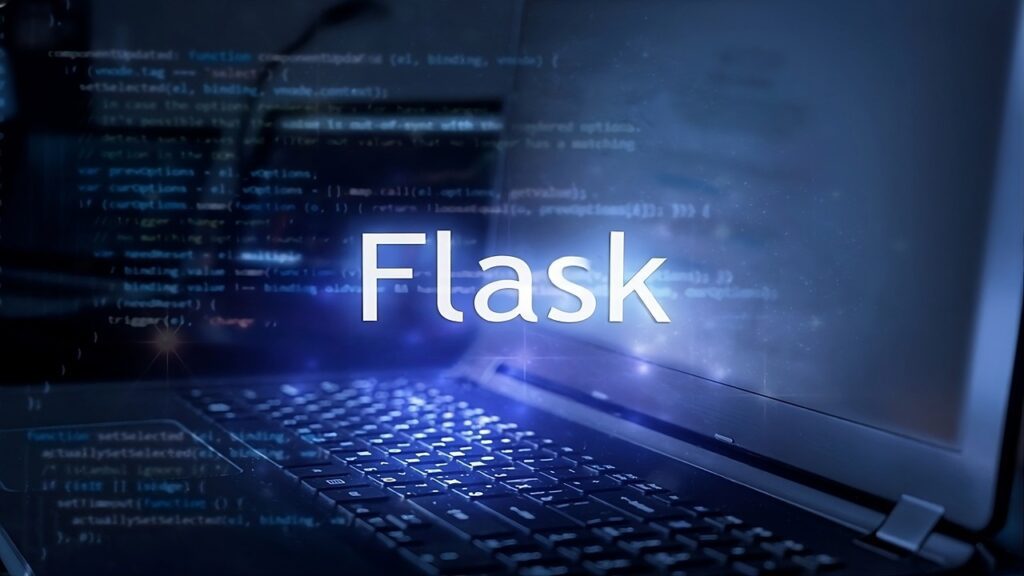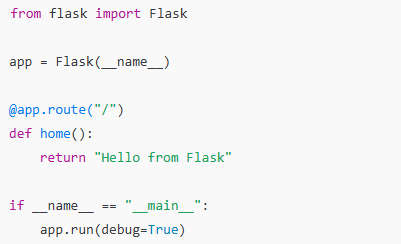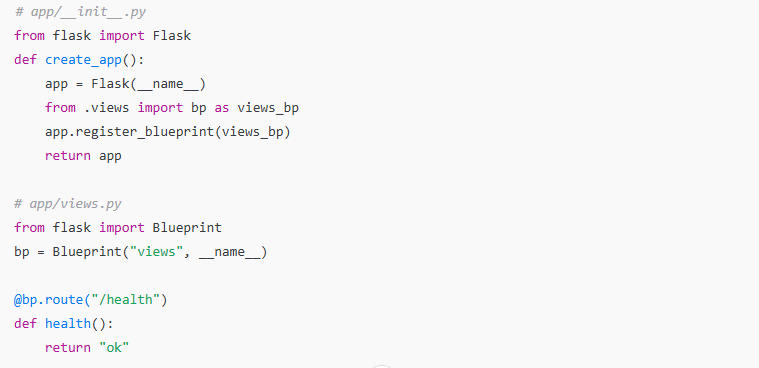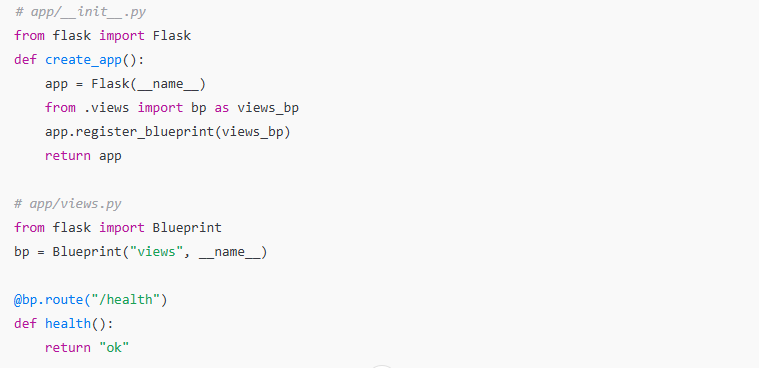
Many teams ask what is flask and why developers keep choosing it. They want clear control, simple setup and private data. Flask fits these needs with a small core and clean code.
With Flask, you run on your own stack, shape the app to your data, and see how each part works. You start small and grow safely as the product grows.
In this article, we explain what is flask, how the framework works, what is python flask in practice, and what is a flask used for. We also compare it with other options and share code you can try today.
Table of Contents
ToggleWhat is Flask?
It’s a lightweight open source web framework for Python. People call it a micro framework because it ships only the essentials. You add more parts as your app needs them. That keeps projects simple and fast. The official docs describe Flask as a WSGI web application framework that builds on Werkzeug and Jinja.
This design gives you freedom. You choose the folder layout and the tools. You decide how to build routes, views and services so they match your team and your goals.
Example: a tiny app you can run

This is enough to serve a page. It shows what is flask in the most direct way possible.
Key ideas
- Small and easy core
- Built in development server and debugger
- Jinja templates for pages
- Simple request routing
- Works well with tests and extensions
- Clear docs for fast onboarding
What is Python Flask?
When people ask what is python flask, they mean Flask is written in Python and made for Python developers. It fits the Python way of clear code and rich libraries.
Because of this, teams can:
- Write readable code that feels natural
- Use tools like NumPy, Pandas and Matplotlib
- Serve machine learning models inside web apps
- Prototype fast without switching languages
The joint Python Software Foundation and JetBrains survey gathered more than twenty-five thousand responses and shows Python’s steady use in web work and data work, which explains why many teams pair the Flask framework with data pipelines.
Example: a small JSON API

This is a simple way to expose data to a front end or another service. It shows what is python flask in a real task.
What is Flask Used For?
If you still ask what is flask used for, here are the common cases where it shines.
1. Web Applications
Flask powers personal sites and business tools. You control routes, views, database links, forms and templates. You add only what you need when you need it.
Example: render a template

2. APIs (Application Programming Interfaces)
It handles routing and JSON well, so it is a strong fit for REST style APIs and microservices. It works cleanly with modern front ends.
3. Prototypes and MVPs (Minimum Viable Products)
It helps you move from idea to live test in hours. If the idea works, add extensions and Blueprints and grow from there.
4. Small to Medium-Sized Projects
Data teams use Flask to serve models and charts with Plotly or Bokeh. It is a simple way to share insights with a small group or the whole company.
You have now seen the core uses, so a short table after the explanations can help you scan them fast.
Table 1. Common uses and why Flask fits
| Use case | Why Flask fits | Small step to try |
| Personal sites and tools | Quick setup and full control | Add a route and a simple template |
| APIs and microservices | Clean routing and JSON | Create a POST route that returns JSON |
| Internal dashboards | Works with Python data tools | Serve a chart from a Pandas DataFrame |
| Startups and MVPs | Minimal parts and fast changes | Ship a slice, then add extensions |
| Research and demos | Easy to learn and share | Package a notebook model behind one route |
In the 2024 Stack Overflow survey, Flask appears in the web frameworks charts with a meaningful share and a strong keep using score in their admired and desired view. That pattern reflects steady interest from teams that want simple and flexible tools.
Why developers choose the Flask framework
So far you have seen what is flask, what is python flask and what is a flask used for. Now let us look at why developers keep picking the Flask framework for real products.
1. Simple to start, strong as you grow
You can write a hello world in a few lines and later add users, APIs and admin screens. You grow the app in small safe steps.
2. Full flexibility and control
It does not force one layout, one template engine, or one ORM. You pick your database, your auth method and the tools you need. That suits health portals, CRM dashboards, commerce, and analytics.
3. Clear path for Python teams
If you know Python, Flask feels natural. The syntax is simple. The APIs are clean. You spend time on features, not setup.
4. A strong ecosystem of extensions
The core is small, but the ecosystem is large. Use these parts when you need them.
Example: basic database model with SQLAlchemy

Flask depends on Werkzeug and Jinja, and together they give you a stable base for routing and templates. That base is one reason the Flask framework remains popular in Python teams.
Flask vs Django vs FastAPI
Before the final choice, teams often compare Flask with Django and FastAPI. The short notes below set the context. Django ships many parts by default including an admin and an ORM. Flask stays small and lets you add parts as needed. FastAPI follows the ASGI model and focuses on modern async patterns and automatic docs.
You have now read the key points, so a compact table is useful here.
Table 2. Flask vs Django vs FastAPI
| Topic | Flask | Django | FastAPI |
| Core idea | Micro framework you extend | Full stack with many parts | Modern async first API framework |
| Server model | WSGI by default | WSGI by default | ASGI with Uvicorn or similar |
| Learning curve | Easy for Python users | Moderate due to many parts | Easy for API focused teams |
| Admin and ORM | Add as needed | Admin and ORM included | Add admin, choose ORM |
| Best fit | Custom flows, MVPs, internal tools | All in one builds and content heavy sites | High throughput APIs and async work |
| Docs and community | Clear docs and many guides | Mature docs and many packages | Clear docs and rapid growth |
The 2024 Stack Overflow results show Flask alongside Django and FastAPI in the web frameworks section, which reflects steady use in production and ongoing interest from developers.
Quick start code you can reuse
Here are a few small pieces you can drop into a starter project.
Blueprints keep features modular

This keeps routes tidy and makes it easy to test parts in isolation.
Render a template with data

Deploy basics
For production, run behind a WSGI server. A common pattern is Gunicorn in front of Flask with Nginx as a proxy. Flask is WSGI by default. FastAPI is ASGI by design and uses an ASGI server such as Uvicorn. Knowing this helps teams pick the right runtime.
Performance, security and testing
Performance
Flask is light, so it can be fast when you keep routes simple and push heavy work to background jobs. For pure async loads, FastAPI can be a better fit because it runs on ASGI by default.
Security
Use Blueprints to isolate features, set a strong secret key, and enable secure cookies. Escape user input in templates, which Jinja helps you do by default. Markup Safe is part of the default install to reduce injection risk.
Testing
Write tests for each route and for any service that touches the database. Flask has a test client that makes it easy to issue requests in code. Keep fixtures small and reset the database between tests.
Add a short prerelease check. Hit a health route, run the test suite, lit the code, then deploy. Simple checks prevent late night issues.
Studies and signals to watch
- Survey signal: The Stack Overflow survey for 2024 lists Flask in the web frameworks and technologies section, with an admired and desired score that shows many users want to keep using it. This is a useful signal when you present a framework choice to a stakeholder.
- Docs signal: Flask’s official site explains that it builds on Werkzeug and Jinja, so you get a stable base and a clear mental model. This matters about onboarding and long-term care.
These points support a clear message to leadership when they ask what is flask and whether the path is safe for the team.
Common mistakes to avoid
- Skipping Blueprints and ending up with one huge file
- Hard coding secrets instead of using environment variables
- Pushing heavy work into the request path instead of a job queue
- Rewriting features that good extensions already provide
Start with a tiny checklist. Structure, config, tests and one health route. Keep it in the repo. Review it before each release.
Final Thoughts
If you came here asking what is flask, you now know why it serves APIs, dashboards, and custom apps so well. The small core gives you control. The clear code helps you move fast. The ecosystem lets you add only what you need.
For Python teams, the path is simple. Pick the framework, add SQLAlchemy and Jinja, and grow at your pace. When you need a quick MVP or a clean API, Flask will help you ship with less friction. When you need a larger system, you can add features without a full rewrite. In short, if someone asks what is python flask or what is a flask used for, the answer is that it is a practical way to turn ideas into web apps that your users can trust.


